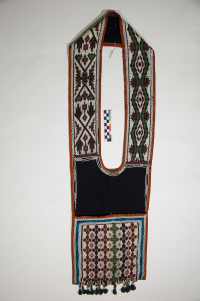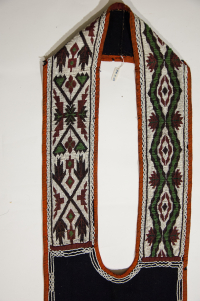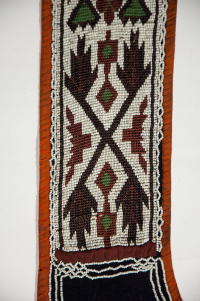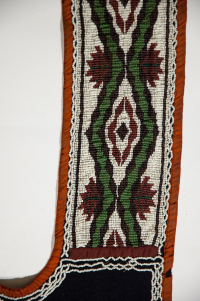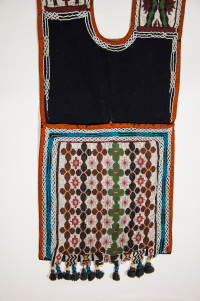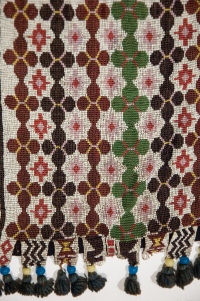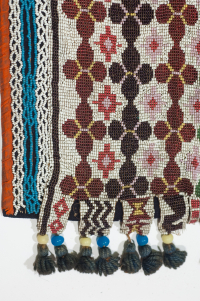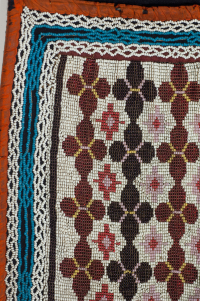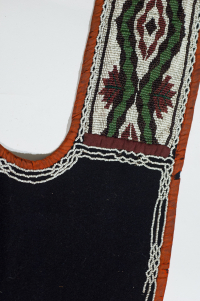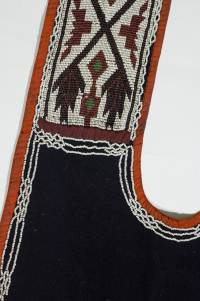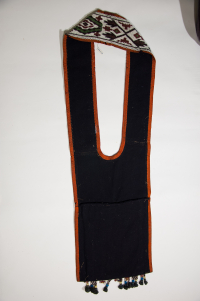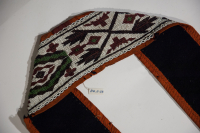Bandolier Bag
Bandolier Bag
Bandolier Bag
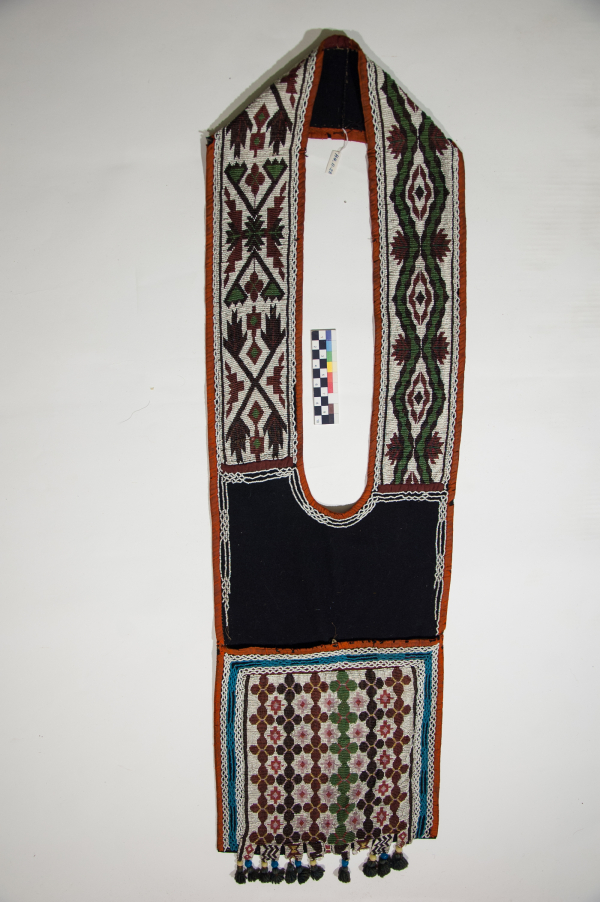
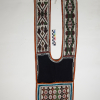
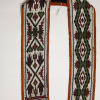
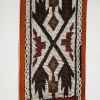
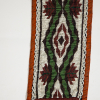
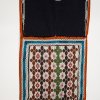
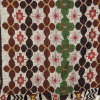
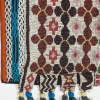
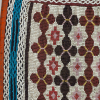

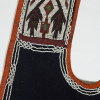
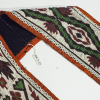
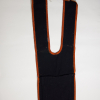
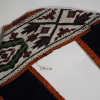
Loom-woven seed bead strap & panels, silk ribbon edging, otter-tail & diamond beaded overlay trim, functional pocket; 9 beaded tabs, pony beads & yarn tassels
Summary of available descriptive information
Read More About This Relative
Fabric, wool, blue (navy); Fabric, cotton, unbleached; Binding tape, silk?, light red; Bias tape, cotton?, red (wine); yarn, wool?, green (grey-teal); Beads, pony, blue (medium opaque), yellow (opaque light-lemon); Beads, seed, glass, white (opaque), brown (opaque chocolate), red (transparent garnet, opaque bright pink, opaque rose), yellow (opaque lemon), green (opaque medium green), blue (opaque medium blue) .
Hand sewn; Made of blue stroud with seed bead decoration; Edged with orange silk ribbon; Pouch lined with unbleached cotton; Hide tab on inner edge of pouch to act as buttonhole.
Pouch bordered with two sets double row white bead diamond decoration, with two rows blue bead decoration between; Centre decorated with loom woven multi-coloured seed beads in a white field; Design is conventionalized unit four-dot (Lyford), and geometric cross; Red bias tape sewn over thread ends at top; Fringe is nine woven beaded tabs at bottom, each with two strands yellow and blue pony beads with blue yarn attached; Tab design is geometric: hourglass, zigzag, repeated from centre out; Strap bordered with row white beads in diamond pattern; Red bias tape sewn over thread ends at bottom; Bands of loom woven seed beads on white field in geometric design; Both sides asymmetrical; Designs on both sides individually symmetrical; Design elements: crayfish, claw, arrow, diamond, running water, leaf.
Bandolier bags most likely originated in the Upper Great Lakes region during the 1840s and 1850s. Fashioned exclusively from European materials and adorned with thousands of beads, bandolier bags were primarily for show, as a symbol of identity, wealth and status. Although initially functional, by the late 19th and early 20th centuries many of the bags had false pockets or none at all. Sometimes called "friendship bags", they were often created as gifts to strengthen relationships within communities or between nations. By the 1870s they had become an important element of formal dress worn mainly at ceremonies and celebrations by men, and occasionally by women. They wore them - singly or several at a time - crossed over the torso or draped around the neck. “The wearing of more than one bag was generally the prerogative of a leader or a person of high honour." (McCord, 2013) “Bandoliers were adopted by Ojibwa in 19th century after seeing bullet pouches used by British soldiers. Bullet pouches were plain and decorated with crest or coat of arms. When idea adopted by Ojibwa, they were greatly prized and highly decorated ceremonial accessories. They became so highly prized by Ojibwa and other tribes (especially Sioux), that one bandolier could be traded for one pony. They became a status symbol of highest ranking Midewiwin priests. (Flanders, 1977)
Provenance
McCord Museum, Wearing Our Identity. Montreal: The McCord Museum, 2013; and “Beads: Their Use By Upper Great Lakes Indians” by Richard Flanders, 1977
McCord Museum. Wearing Our Identity. Montreal: The McCord Museum, 2013. Print.
About This GRASAC Record
Manitoba Museum
Content from the Manitoba Museum's catalog records. Uploaded by Orvis Starkweather as part of their summer internship.













 Knowledge Sharing Platform
Knowledge Sharing Platform

